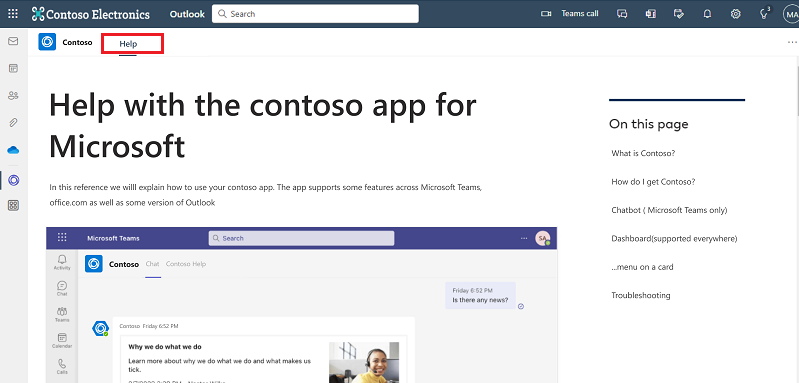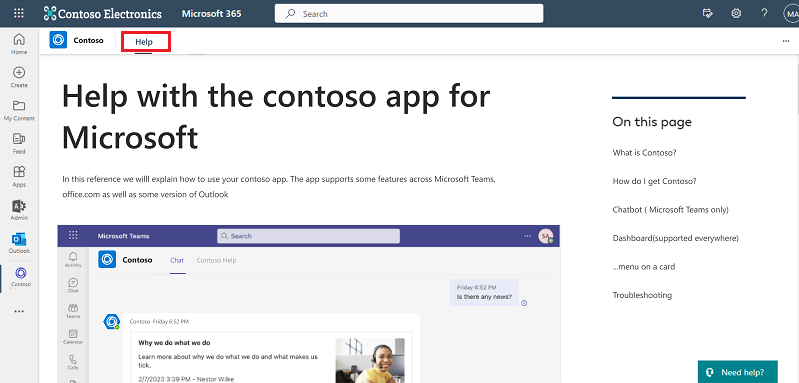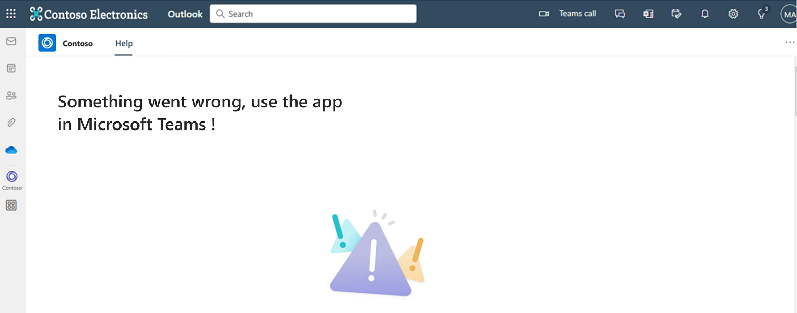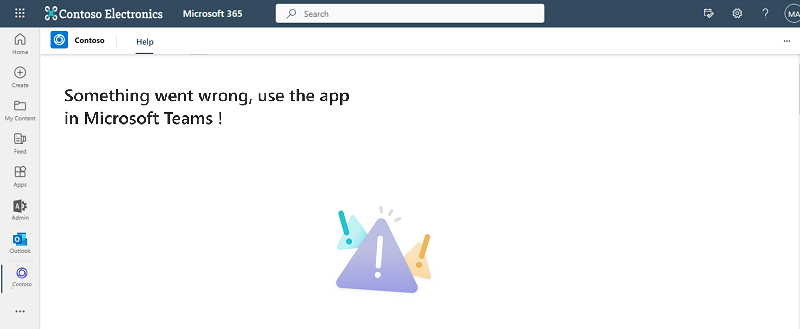General guidelines for publishing Teams apps extensible across Microsoft 365
To develop and publish Teams apps extensible across Microsoft 365 clients, you need to adhere to a set of specific requirements. This section provides detailed guidelines that aid in making your app compliant and increase its chances of successful publication.
In this article, you’ll find more information on the following guidelines:
General guidelines
Teams apps designed to extend across Microsoft 365 clients must use the app manifest version 1.13 or later.
The support URL of your app must carry content relevant for the app across Microsoft 365 clients and mustn't reference only a single client.
The content offered in your app's Get started, Sign in, Sign up, Sign out, Help pages, or way forward messages must reference all the supported clients.
The app must provide significant value in each of the clients it's extensible to. For example, if you have a tab only app in Teams and you want your app to be extensible to Microsoft 365 and Outlook, you must ensure that the app provides suitable workflows in Microsoft 365 and Outlook clients. Your app must provide a viable solution that is compatible with all Microsoft clients the app is extensible to.
To explain the requirement for your app to provide significant value to users in all the extensible clients, here are some scenarios where we see a Contoso app extended to Microsoft 365 and Outlook providing significant value to users within Teams but offering no usable workflows in the Microsoft 365 and Outlook clients.
Contoso is a companywide news aggregator app that aggregates all the internal news and important information that is circulated in a company in a personal tab in Teams for the benefit of end users. Users of Contoso can add the Contoso Teams app to their personal scope and be aware of real-time companywide news articles. Contoso also has a Help tab containing a complete walkthrough of the functionality should the users need guidance on using the full potential of the app. Contoso supports extensibility to Microsoft 365 and Outlook in the personal tabs on these clients. However, once a user has added the Contoso app from the Microsoft 365 or Outlook store, users only see the Help tab but the personal tab with the aggregated news content isn't displayed within Microsoft 365 and Outlook. As such, the Contoso app on Microsoft 365 and Outlook offers no usable software solution and doesn't meet significant value in these clients.
Contoso app in Outlook:

Contoso app in Microsoft 365:

Recommendation:
To provide significant value, Contoso app developer must ensure that the personal tab in Teams with the aggregated news content is also surfaced within the Microsoft 365 and Outlook clients.
Compatibility guidelines
- Teams apps that extend across Microsoft 365 clients must be fully responsive and functional on the latest version of Microsoft Edge and Google Chrome clients.
- User must be able to invoke and use personal tabs or message extensions on the latest version of the following:
- Outlook on desktop, web, and iOS.
- Microsoft 365 on desktop, web, Android, and iOS.
Mobile experience guidelines
- Users must be able to launch the app from the actions flyout menu within the Microsoft 365 and Outlook clients on mobile and the app name must be displayed in the action bar.
- Users must be able to launch and switch between multiple static tabs within the Microsoft 365 client on mobile and the tabs must load. If there are more than three static tabs, the remaining tabs must be visible under the More section.
- If your app uses single sign-on (SSO), it must authenticate the user successfully in the client the app is first launched in, without the need to reauthenticate on each client.
- When the user switches or signs out from the Microsoft 365 and Outlook clients on mobile, the app must close the user's instance.
- Users must be able to return to their previous work state. If the user is on the root page, the back navigation must end the app instance within the client on mobile.
- Apps that support deep link to a workflow must be able to redirect the user to the appropriate landing page experience.
- Progress indicators must appear when the app is loading and dismiss automatically after the app is fully loaded.
- An error screen must appear when an app fails to load due to incoherent or broken network, time-out, and authentication failure.

